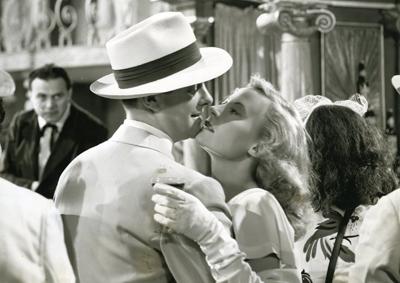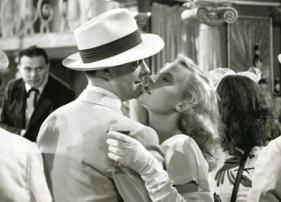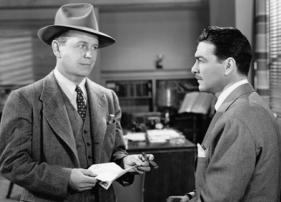“Through a series of adroit directorial strokes, in the Hitchcock tradition, the pic’s momentum is made to mount in a steady, ascending line.” -- Variety
Directed by Arthur D. Ripley
Combining an original setting and timely story elements, Arthur D. Ripley here crafts a highly original film noir. Chuck Scott (Robert Cummings) is a down-on-his-luck, ex-serviceman, badly in need of a meal in post-war Miami. Stumbling upon a lost wallet, he traces the owner of the billfold to a palatial home. Owner Eddie Roman (Steve Cochran), a suave businessman, is pleased by “Scotty’s” honesty, and offers him a job as chauffeur. From the side, taciturn Peter Lorre as “Gino,” Roman’s sidekick, grimaces and bemoans these displays of honor and goodwill.
Scotty quickly catches on that Roman is bad news, probably involved in the death of a business competitor, but he keeps his mouth shut for the sake of his meal ticket. His resolve is tested, however, when Roman’s trophy wife Lorna (Michèle Morgan) appeals to him for help in secretly spiriting her from Miami to Havana as an escape from her soulless existence. Once off American shores, the couple find common ground—and love. But they discover it’s not so easy to escape Roman’s octopus-like reach and influence. And soon, Scotty finds himself at the center of his own murder mystery.
Scotty’s moral lapse and corruptibility are somewhat more surprising than in many noir titles, owing to the film’s intersection with the “returning soldier” subgenre, which often treated such characters more earnestly. (William Wyler’s reverent The Best Years of Our Lives was released to great fanfare in the same year). Scotty’s status also becomes a driver of the plot when the possibility is introduced that many of the horrible things he witnesses may be symptoms of an ex-soldier’s overheated imagination, not to be taken too seriously.
Director Arthur D. Ripley had begun as a gag writer for Mack Sennett. A prolific screenwriter who went on to produce and direct, upon retirement Ripley was sought out to become the first Professor of Cinema Arts in the Motion Picture Division of the Department of Theater Arts, the foundation of today’s UCLA School of Theater, Film and Television.
This restoration was the last to be completed by UCLA Film & Television Archive preservationist Nancy Mysel, who passed away in 2012. It caps a magnificent career in film preservation, and is a tribute to Nancy’s inspiring passion for the moving image.
Shannon Kelley
Nero Films, Inc./United Artists Corp. Producer: Seymour Nebenzal. Screenwriter: Philip Yordan. Based on the novel "The Black Path of Fear" by Cornell Woolrich. Cinematographer: Frank F. Planer. Editor: Edward Mann. With: Robert Cummings, Michèle Morgan, Steve Cochran, Lloyd Corrigan, Peter Lorre.
35mm, b/w, 86 min.
Preserved from the incomplete 35mm nitrate original picture and track negatives, an incomplete 35mm nitrate dupe picture negative, an incomplete 35mm nitrate composite dupe negative, an incomplete 35mm nitrate French composite dupe negative, and 16mm acetate picture and track negatives. Laboratory services by Cinetech, Deluxe Media Services, Fotokem Film and Video, Audio Mechanics, Chace Audio by Deluxe, DJ Audio.






 Mobile Navigation
Mobile Navigation



